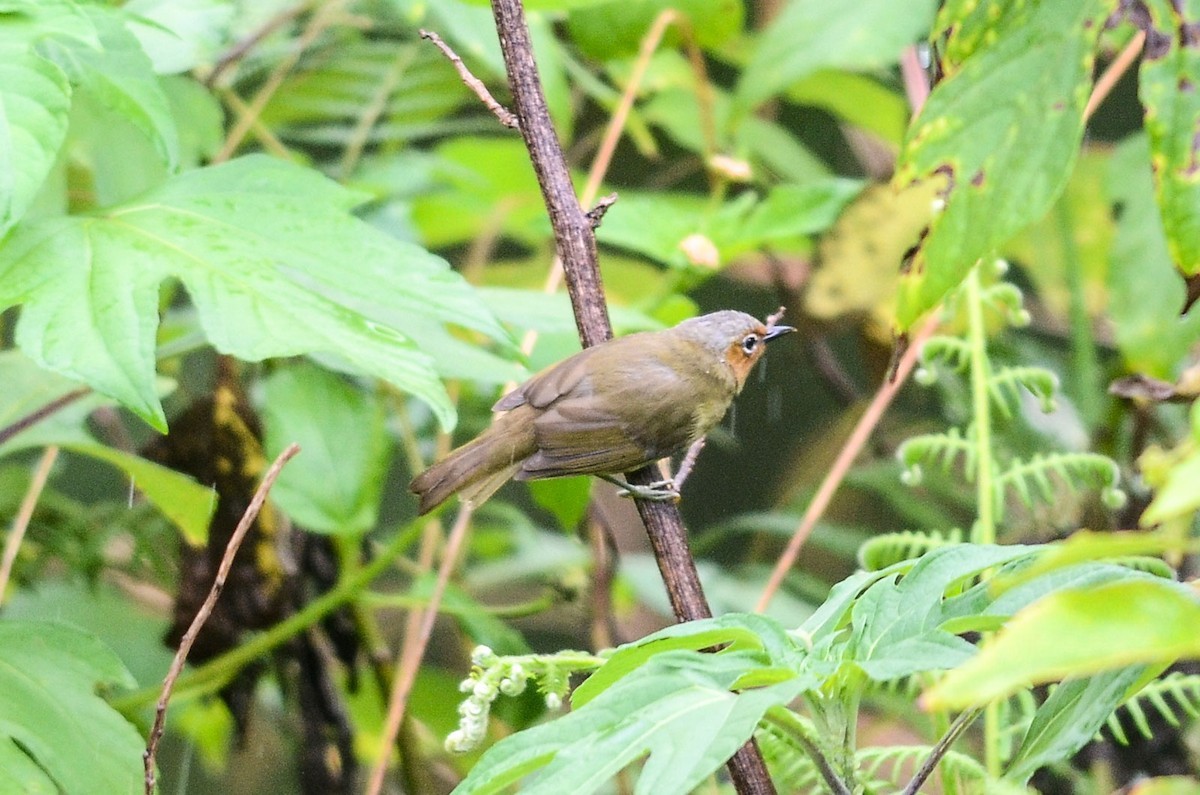Chestnut-faced Babbler
A species of Striped Babblers Scientific name : Zosterornis whiteheadi Genus : Striped Babblers
Chestnut-faced Babbler, A species of Striped Babblers
Botanical name: Zosterornis whiteheadi
Genus: Striped Babblers
Content
Description General Info
 Photo By Nikolaj Mølgaard Thomsen
Photo By Nikolaj Mølgaard Thomsen Description
The chestnut-faced babbler (Zosterornis whiteheadi) is a species of bird in the white-eye family Zosteropidae. It is endemic to the island of Luzon in the Philippines. There are two subspecies, Z. w. whiteheadi in northern and central Luzon, and Z. w. sorsogonensis in south eastern Luzon. The species is generally found in mountain forests, generally above 1000 m (although occasionally down to 100m. Within its range is catholic in its choice of habitat, frequenting broadleaf forests, moist mossy forests, pine forest, open forest, scrub and human modified habitat as well. The chestnut-faced babbler is a medium-sized babbler, 15 cm in length and weighing between 17–28 g. The plumage of this species is not sexually dimorphic, and that of juveniles has not been described. They have a chestnut face with a grey crown and nape, and an incomplete white eye ring. The wings and tail are olive-brown and the flanks paler olive, tending towards buff-yellow on the breast. The subspecies Z. w. sorsogonensis is similar, but the crown and nape are edged in black. The call is described as rapid, busy and metallic. The species feeds on seeds, fruit, insects (particularly beetles) and spiders. Single birds, pairs or flocks of up to thirty will feed, usually in the lower growth of the forest, but occasionally up to the canopy. They will join mixed-species feeding flocks with other species. Water is obtained from pitcher plants. 
Size
15 cm
Nest Placement
Tree
Feeding Habits
Chestnut-faced Babbler consumes seeds, fruit, beetles, and spiders. Forages alone or in groups, often joining mixed-species flocks, from understory to canopy. It drinks from pitcher-plants, displaying a unique adaptation.
Habitat
The chestnut-faced Babbler is typically found in montane mossy forests, broadleaf evergreen forests, pine forests, along with open forested areas and secondary growth. Its preferred environments are characterized by dense vegetation including scrub, and tangled masses of high grass and small trees on mountainsides, often found in higher mountainous regions.
Dite type
Insectivorous
General Info
Feeding Habits
Bird food type

 Photo By Nikolaj Mølgaard Thomsen
Photo By Nikolaj Mølgaard Thomsen Scientific Classification
Phylum
Chordates Class
Birds Order
Perching birds Genus
Striped Babblers Species
Chestnut-faced Babbler